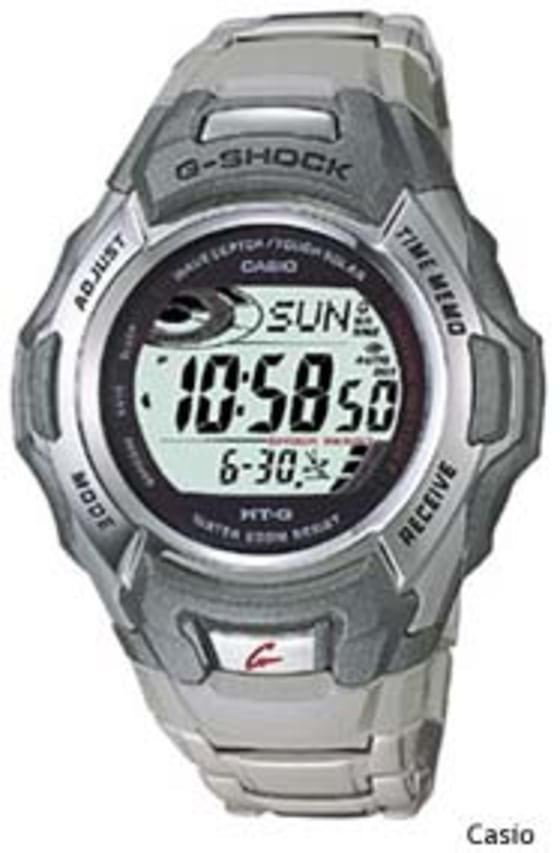This Casio G-Shock could just be the world’s most perfect wristwatch. It is rugged, unbelievably accurate, and ridiculously easy to maintain and use. Most importantly, all of this technology is very affordable.
I read about the new G-Shock Atomic Tough Solar watch in a magazine. They did a comparison of the sturdy Casio versus a $100,000-plus Swiss watch built to withstand very rough treatment — something like falling onto a concrete floor. Both timepieces passed with flying colors. The Casio G-Shock retails for $150. But that was only half the story.
The MTG-900DA-8V is a digital quartz watch that never needs batteries. The black rim around the face of the watch is actually a solar collector. Everything from bright sunlight to a fluorescent bulb helps recharge the watch. Since I’ve been using it, the power indicator has never wavered from “high.” Casio says the internal storage cells should last a lifetime.
This G-Shock also adjusts itself to the National Atomic Clock four times a day, ensuring that it’s the most accurate timepiece you can wear. It receives a time calibration signal transmitted from Fort Collins, Colo. According to Casio, signal reception is possible within a radius of about 2,000 miles from the transmitter. Lots of clock radios, wall clocks and watches can do this, to some degree or another. But, I’ve had really good results with this watch once I figured out the secret. More in a minute.
The G-Shock is really one tough wristwatch. The first G-Shock watch was invented exactly 20 years ago after one of Casio’s engineers destroyed his beloved quartz timepiece. He wanted to make his next watch one that could withstand nearly everything. The rest is history.
My sample has hit the ground a few times — and has been scraped and knocked around in normal use. All of my watches bear battle scars. So far, and it’s been over a month, this watch has taken a beating and has come through with flying colors.
The MTG-900DA-8V also has many of the features that have made G-Shock watches so popular: It’s water-resistant down to 200 meters, the watch face is backlighted either by the press of a button or automatically when you tilt your wrist. There’s a 30-page databank, a stopwatch that shows hundredths of a second, four daily alarms and a snooze alarm, an hourly time signal, an auto calendar and world time functions for 30 cities.
The atomic clock signal it receives comes from government-operated WWVB, which continuously broadcasts time and frequency signals at 60 kHz. The broadcasts are used throughout North America to synchronize timepieces specifically designed to receive these signals.
In most of the country, WWVB’s signal is best received at night. Casio tells you to put the watch near a window facing toward Colorado when you go to sleep. At 2, 3, 4 and 5 a.m. the watch automatically looks for the signal, and when it finds it, the time is updated. For me, that process was hit and miss. Usually miss. Casio also says you can manually try to synch the watch any time during the day. Forgetaboutit!
I asked a Casio expert who said he hadn’t had much luck either — so I consulted the FAQ on WWVB’s Web site. One hint was to turn the timepiece 90 degrees away from facing the transmitter. The FAQ explained that the timepiece antenna was very directional. In my case, I turned it to face north instead of west. Now, it works every night. I also found that it’s better to raise the watch above my window’s metal frame. Metal can block WWVB’s signal.
As for aesthetics, this watch is very large, even for a G-Shock watch. The metal band was so long that I had to take three links out for it to fit. On the other hand, I don’t wear the watch over my clothes, and as for size, there is a lot going on inside.
And, if $150 seems too much to pay, Casio also has Atomic Tough Solar devices that come with a black or blue resin (plastic) band. They retail for $99 — very reasonable prices for such technologically impressive timepieces.
